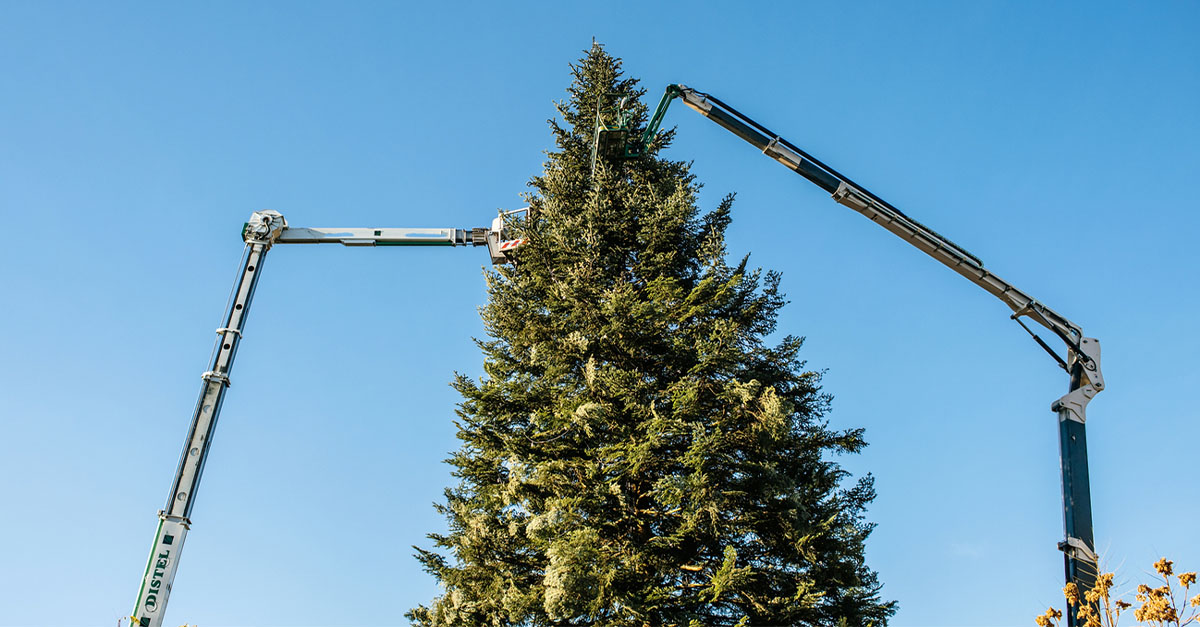Winter feels like a great time to hunker down and hibernate, especially if you live in an area that sees chilly weather. But braving the outdoors to give a little attention to your landscape can lead to vibrant blooms in the spring and summer. Even if your trees are dormant in the winter, here’s what you can do now to keep them healthy and happy year-round.
Prime Time for Pruning
There are several reasons why cooler winter weather is the best time to prune your trees. For one, bare branches are easier to trim since visibility is better, and tree professionals get an unobstructed view of what needs to be removed. For another, winter is a lull in the growth cycle for most trees, so pruning them now when they’re dormant means you’re unlikely to cause damage to the vulnerable new growth.
And speaking of new growth, wintertime pruning lays the foundation for spring abundance in that department. Pruning facilitates heartier growth for the spring season, because it gives new branches and leaves more sun exposure and space in which to spread.
Unsure when or where to start? Deciduous trees like maples and beeches can benefit from late-winter February pruning, along with fruit trees and evergreens, when the threat of a destructive freeze has largely passed. The best time to prune oaks is December or January.
There are several pruning methods to use, including removing dead or at-risk branches, and thinning that controls your tree’s shape, size, and growth pattern. If you have the know-how and equipment for proper pruning, feel free to tackle small shrubs on your own. But if there’s any uncertainty on your part, or you have larger trees that require heavy-duty equipment, be sure to leave it to the pros. We know precisely how to remove at-risk or dead branches without causing injury to the rest of your tree.
Bundle Up with Burlap
Most established trees can withstand cold fronts. But in southern climates when it comes to young saplings or sensitive plants, a burlap covering may be in order. This material can lock in warmth while still being breathable enough for sufficient air flow. Drape the burlap over your plant all the way to the ground, and secure it with twine. Only leave this covering on for the duration of the cold snap, as keeping it on any longer could cause excessive heat to build up. Some of the plants that need the most protection from a frost include jasmine, citrus, bougainvillea, and hibiscus.
Fertilize Before Frosts
Although you may not see much growth on branches throughout the winter, the roots below are busy expanding. Fertilizing before a frost delivers a hefty dose of nutrients to hungry roots so they can grow stronger throughout the winter.
Insulate with Mulch
We often think of springtime as the ideal season for mulching, but it doesn’t hurt to freshen up your mulch in the fall, too. Doing so can add an extra layer of insulation to your tree’s roots, which can protect them against cold weather. If you tend to experience dry winters, having mulch will also help the roots retain moisture throughout the season.
For expert pruning services to support your trees’ health, rely on Premier Tree Solutions. Our arborists specialize in tree care and removal to keep your property safe and attractive. Call 404-252-6448 to request an estimate, contact us online for an assessment, or reach out immediately at 404-569-8897 for emergency service.







